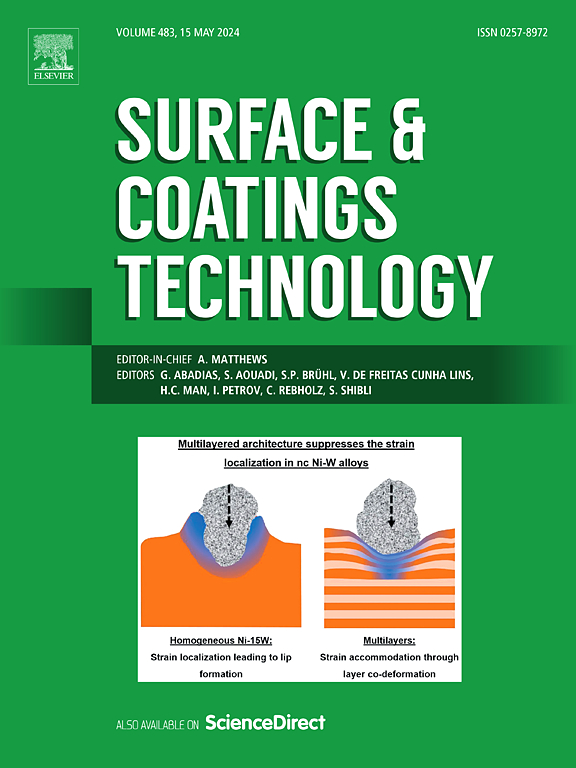Achieving a self-densified conversion coating architecture by the bath composition design towards a multi-step nucleation pathway
IF 5.3
2区 材料科学
Q1 MATERIALS SCIENCE, COATINGS & FILMS
引用次数: 0
Abstract
Achieving a self-densified conversion coating on magnesium alloy is the ultimate goal for a prolonged service life. Such a goal should be achieved by modulating the nucleation process, which poses the greatest challenge. In this work, a new designing rationale for the conversion bath was proposed to facilitate a multi-step nucleation process by thermodynamic calculations, thereby reducing coating defects and improving corrosion resistance. The selection of cation candidates should comply with the following rules: firstly, the solubility product (Ksp) value should be low enough for precipitation; secondary, the Ksp values among different species should not deviate significantly from each other. The phosphate conversion bath was used as an example to validate the idea. Results demonstrate that a self-densified conversion coating architecture when Mn- and Ca-containing salt were simultaneously added. The coating exhibits both excellent protectiveness and durable wet adhesive strength. This work offers a new perspective concerning the design of the conversion bath with optimal protectiveness.
通过向多步成核途径的镀液组合物设计实现自致密转化涂层结构
实现镁合金的自致密转化涂层是延长使用寿命的最终目标。这一目标应通过调节成核过程来实现,这是最大的挑战。在这项工作中,提出了一种新的转化浴设计原理,通过热力学计算促进多步成核过程,从而减少涂层缺陷并提高耐腐蚀性。候选阳离子的选择应遵循以下原则:一是溶解度积(Ksp)值要低到足以沉淀;其次,不同种间的Ksp值之间不存在显著偏差。以磷酸盐转化浴为例验证了这一思想。结果表明,同时加入含锰和含钙盐时,形成了自致密的转化涂层结构。该涂层具有优异的保护性能和持久的湿粘强度。这项工作为设计具有最佳保护性能的转换浴提供了一个新的视角。
本文章由计算机程序翻译,如有差异,请以英文原文为准。
求助全文
约1分钟内获得全文
求助全文
来源期刊

Surface & Coatings Technology
工程技术-材料科学:膜
CiteScore
10.00
自引率
11.10%
发文量
921
审稿时长
19 days
期刊介绍:
Surface and Coatings Technology is an international archival journal publishing scientific papers on significant developments in surface and interface engineering to modify and improve the surface properties of materials for protection in demanding contact conditions or aggressive environments, or for enhanced functional performance. Contributions range from original scientific articles concerned with fundamental and applied aspects of research or direct applications of metallic, inorganic, organic and composite coatings, to invited reviews of current technology in specific areas. Papers submitted to this journal are expected to be in line with the following aspects in processes, and properties/performance:
A. Processes: Physical and chemical vapour deposition techniques, thermal and plasma spraying, surface modification by directed energy techniques such as ion, electron and laser beams, thermo-chemical treatment, wet chemical and electrochemical processes such as plating, sol-gel coating, anodization, plasma electrolytic oxidation, etc., but excluding painting.
B. Properties/performance: friction performance, wear resistance (e.g., abrasion, erosion, fretting, etc), corrosion and oxidation resistance, thermal protection, diffusion resistance, hydrophilicity/hydrophobicity, and properties relevant to smart materials behaviour and enhanced multifunctional performance for environmental, energy and medical applications, but excluding device aspects.
 求助内容:
求助内容: 应助结果提醒方式:
应助结果提醒方式:


